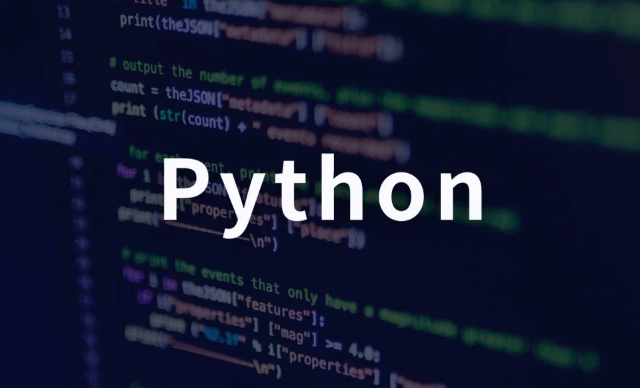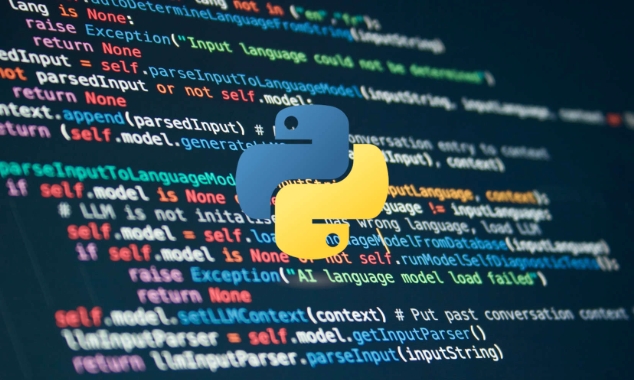python tkinter entry widget example
Create an Entry input box and set the width to 25 characters, and use pack() to layout; 2. Get user input content through entry.get(); 3. Read input when clicking the button. If it is not empty, it will display "Hello, input content" on the label, otherwise it will prompt "Input cannot be empty"; 4. Optional functions include Enter to trigger a click event, clear the input box, set the default text and disable the input status; 5. This example fully implements the input, processing and feedback process, and is suitable for basic scenarios such as login forms and search boxes.

Below is a simple Python tkinter.Entry widget example showing how to create an input box, get user input, and display the input when the button is clicked.

Basic functions:
- Create an
Entryinput box - Add a button
- Click the button and read the input and display it on the label
import tkinter as tk
# Create main window root = tk.Tk()
root.title("Tkinter Entry Example")
root.geometry("300x150")
# Create a tag to prompt the user to enter label_prompt = tk.Label(root, text="Please enter your name:")
label_prompt.pack(pady=10)
# Create an Entry input box entry = tk.Entry(root, width=25)
entry.pack(pady=5)
# Create a button, click to display the input content def on_button_click():
user_input = entry.get() # Get input if user_input.strip():
result_label.config(text=f"Hello, {user_input}!")
else:
result_label.config(text="Input cannot be empty!")
button = tk.Button(root, text="hello", command=on_button_click)
button.pack(pady=5)
# Create a tag to display the result result_label = tk.Label(root, text="", fg="blue")
result_label.pack(pady=10)
# Run the main event loop root.mainloop()Key points description:
1. Entry creation
entry = tk.Entry(root, width=25) entry.pack()
-
widthsets the width of the input box (in characters) - Use
.pack()layout manager to place controls
2. Get input content
user_input = entry.get()
- The
.get()method is used to get the text in the current input box.
3. Clear the input box (optional)
entry.delete(0, tk.END)
- Commonly used to clear the input box after submission
4. Bind the Enter key (enhanced experience)
You can also let press Enter to trigger the button function:
entry.bind('<Return>', lambda event: on_button_click())
Add it after entry is created.

Extension: Set default text or disable input
entry.insert(0, "default name") # Insert the default text entry.config(state='disabled') # Disable input (can be restored with 'normal')
Basically that's it. This example is suitable for beginners to quickly master the basic usage of Entry . It is often used in actual projects for login forms, search boxes and other scenarios.
The above is the detailed content of python tkinter entry widget example. For more information, please follow other related articles on the PHP Chinese website!

Hot AI Tools

Undress AI Tool
Undress images for free

Undresser.AI Undress
AI-powered app for creating realistic nude photos

AI Clothes Remover
Online AI tool for removing clothes from photos.

Clothoff.io
AI clothes remover

Video Face Swap
Swap faces in any video effortlessly with our completely free AI face swap tool!

Hot Article

Hot Tools

Notepad++7.3.1
Easy-to-use and free code editor

SublimeText3 Chinese version
Chinese version, very easy to use

Zend Studio 13.0.1
Powerful PHP integrated development environment

Dreamweaver CS6
Visual web development tools

SublimeText3 Mac version
God-level code editing software (SublimeText3)

Hot Topics
 1796
1796
 16
16
 1746
1746
 56
56
 1593
1593
 29
29
 1475
1475
 72
72
 267
267
 587
587
 How to use ttkbootstrap to create a beautiful interface for Python GUI?
May 07, 2023 pm 03:40 PM
How to use ttkbootstrap to create a beautiful interface for Python GUI?
May 07, 2023 pm 03:40 PM
These two pictures are screenshots of the display renderings provided on the official website: theme switching is a simple theme switching. Since there are few components on the current window, the effect is not obvious, but it will look good when there are many components in the layout. importttkbootstrapasttkfromttkbootstrap.constantsimport*root=ttk.Window()style=ttk.Style()theme_names=style.theme_names()#Return multiple theme names in the form of a list theme_selection=ttk.Frame(root,padding=(10,10
 Treeview scrollbar in Python-Tkinter
Aug 20, 2023 pm 05:57 PM
Treeview scrollbar in Python-Tkinter
Aug 20, 2023 pm 05:57 PM
When working with hierarchical data in a graphical user interface (GUI), you often need to display the data in a structured and organized manner. The Treeview widget in Python-Tkinter provides a powerful solution for presenting hierarchical data in a user-friendly way. However, as the number of items in a Treeview increases, it becomes crucial to include scroll bars to ensure smooth navigation and usability. First, make sure you have Python and Tkinter installed on your system. Python3 is recommended for improved compatibility and functionality. If you don't have Tkinter installed, you can easily install it using the Python package manager pip. Open your terminal or command prompt and run the following command
 Place_forget() method in Python using Tkinter
Sep 03, 2023 am 11:25 AM
Place_forget() method in Python using Tkinter
Sep 03, 2023 am 11:25 AM
Tkinter,apopularGUItoolkitforPython,offersaplethoraoftoolstodesignintuitiveandinteractiveinterfaces,amongthese,thePlace_forget()methodstandsoutasapowerfultoolfordynamicGUIlayoutmanipulation.Thismethodenablesdeveloperstoeffortlesslyhideorremovewidgets
 How to implement Frame switching in Python Tkinter GUI programming
May 11, 2023 pm 04:25 PM
How to implement Frame switching in Python Tkinter GUI programming
May 11, 2023 pm 04:25 PM
1. Introduction to the tkraise() method of Frame Usually, a Tkinter application consists of multiple Frames. And you often need to switch between Frames to display the Frame relevant to the user's selection. Tkinter allows stacking Frames on top of each other. To display a specific Frame, just place one on top of another in stacking order. The top Frame will be visible. To put the Frame on top, you can use the tkraise() method of the Frame widget, as shown below: frame.tkraise() 2. tkraise usage example The following will implement a small temperature conversion application, using two for Fahrenheit and Celsius. Different frames
 How to use Python GUI layout tool Tkinter
May 09, 2023 pm 02:16 PM
How to use Python GUI layout tool Tkinter
May 09, 2023 pm 02:16 PM
Graphical User Interface (GUI) Graphical User Interface (GUI) is nothing but a desktop application that helps us interact with the computer. A GUI application like a text editor can create, read, update, and delete a number of different types of files. Applications such as Solitaire, Chess, and Solitaire are game versions of GUI programs, and GUI applications such as Google Chrome, Firefox, and Microsoft Edge are used to browse the Internet. These are some of the different types of GUIs we use on our computers every day. Application, in fact, we can also build simple similar applications through Tkinter. Today, as an introduction to GUI, we will create a very simple
 Python GUI programming: Get started quickly and easily create interactive interfaces
Feb 19, 2024 pm 01:24 PM
Python GUI programming: Get started quickly and easily create interactive interfaces
Feb 19, 2024 pm 01:24 PM
A brief introduction to python GUI programming GUI (Graphical User Interface, graphical user interface) is a way that allows users to interact with computers graphically. GUI programming refers to the use of programming languages to create graphical user interfaces. Python is a popular programming language that provides a rich GUI library, making Python GUI programming very simple. Introduction to Python GUI library There are many GUI libraries in Python, the most commonly used of which are: Tkinter: Tkinter is the GUI library that comes with the Python standard library. It is simple and easy to use, but has limited functions. PyQt: PyQt is a cross-platform GUI library with powerful functions.
 How to make a simple alarm clock program using Python and Tkinter?
Apr 21, 2023 am 11:28 AM
How to make a simple alarm clock program using Python and Tkinter?
Apr 21, 2023 am 11:28 AM
This article mainly uses Python's Tkinter library to create a simple alarm clock program, which can play a sound to remind you at the specified time. The interface of this program is relatively simple, with only one label, three option menus and one button. The user can set the alarm time through the option menu, and then click the button to start timing. When the alarm time is reached, the program will play a sound to remind the user. Now let us explain what each code block does one by one. fromtkinterimport*importdatetimeimporttimeimportwinsoundfromthreadingimport*First, we imported the tkinter library, d
 How to use Python+tkinter to write a forced confession artifact
May 19, 2023 am 11:31 AM
How to use Python+tkinter to write a forced confession artifact
May 19, 2023 am 11:31 AM
Although Python provides multiple message boxes that can meet the needs of most normal people, they are not flexible enough, so sometimes you have to customize the message box. The essence of the new window message box is a window, a piece of information, and two buttons importtkinterastkFONT=("Microsoft Yahei",20)defmsgBox(txt,yesFunc=None,noFunc=None):win=tk.Tk()win. title("started")win.geometry("400x200+300+100")lab





